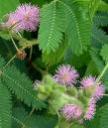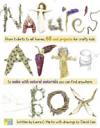 “Mom, why does the date keep changing for the first day of Spring (and Easter, too?)”
“Mom, why does the date keep changing for the first day of Spring (and Easter, too?)”
When the vernal equinox confounds even the science fair kiddies with calendar confusion (20th vs. 21st) it’s time to hunt down the whys so I don’t sound like a goof and give the wrong info.
Ah, what to Google first?! Equinox vs. solstice. Reasons for seasons.
First full moon of spring. Astronomy and the equator. USNO Naval Observatory charts. Education World. Or Space.com, which often helps me convey concepts to kids in easy to understand youth media terms…Sure enough, the crew at ‘Space’ framed their explanation using this Seinfeld sitcom TV lead-in line:
“Avid “Seinfeld” fans might remember the episode when Jerry’s friend, George, was desperately trying to find a way to postpone his impending Christmastime wedding with his fiancee, Susan.
He finally comes up with a solution: “Have the wedding on March 21 – the first day of spring!” Unfortunately, if George had gone through with the nuptials (and Seinfeld aficionados know why he never did), he would have been a full day late.”
Space.com explains varying seasonal dates and lengths in with tons of springboard points for kids to jump off into the night sky, space views, charts and whizbang techno gizmos.
And InfoPlease nicely sums up the whole shebang, “Far from being an arbitrary indicator of the changing seasons, March 20 (March 21 in some years) is significant for astronomical reasons. On March 20, 2008, at precisely 1:48 A.M. EDT (March 20, 05:48 Universal Time), the Sun will cross directly over the Earth’s equator.”
Cool. Got the science down.
So it’s the vernal (spring) equinox in the Northern Hemisphere, the autumnal equinox in the Southern Hemisphere, and translated literally, equinox means “equal night.”
Gotcha. Now I can get back to thinking of spring as a time of all things fresh and green…
 Did you know it’s AG Day too? I sure didn’t.
Did you know it’s AG Day too? I sure didn’t.
Gosh, they need stronger media and marketing…The National Agriculture Council of America site says today’s the day to “honor agriculture for providing safe, abundant and affordable products, a strong economy, a source of renewable energy, and a world of job opportunities.” Hmn, I wish all that were the case…
Most kids I’m around have a minimal understanding of agricultural impact and its role on a global scale beyond farmer’s market educational tidbits, though there are some fabulous exceptions.
DOOF (food backwards) is an amazing food show for kids in development that I’m hoping we’ll team with in some manner with Shaping Youth’s ‘Dare to Compare’ gross out game for good nutrition. They’re hoping to air on pbs, and anything we can do to lend a hand in that regard would be grand. (more on this in a full feature before summer)
Urban Sprouts’ school gardening programs are a stellar prototype for teaching kids ‘where things come from,’ and you’ll find over 1200 kids’ gardening orgs, classroom grants, penpal opportunites and more on National Gardening Associations’ great site, Kids Gardening, “helping young minds grow.”
 From kids’ gardening books and starter kits to ‘nature’s art box’ of treasures, you’ll find “products with a mission” to embrace kids’ love of green. (Botany on Your Plate is the latest one out, weaving together kids’ nutrition and standards-based life sciences curriculum (K-4) with ‘plant snacks’ and scavenger hunts)
From kids’ gardening books and starter kits to ‘nature’s art box’ of treasures, you’ll find “products with a mission” to embrace kids’ love of green. (Botany on Your Plate is the latest one out, weaving together kids’ nutrition and standards-based life sciences curriculum (K-4) with ‘plant snacks’ and scavenger hunts)
The K-12 media mavens I’m working with have ‘spring break on the brain,’ and are already planting seeds of ideas for ‘who’s doing what with whom and where.’ Role model-wise, here’s a way to put a positive media spin on what some kids are doing in the youth service arena…
When you ThinkMTV it’s not the first thing you may come up with for a spring break image, so this needs wildly applauded as an alternative spring break among youth advocates to push the press coverage into a healthier sphere.
 On the green scene in my home, I think we’ll use our spring break to try out “Mimosa pudica” from Brazil. (photo from Jungleseeds.com which has a nice seed shop for children)
On the green scene in my home, I think we’ll use our spring break to try out “Mimosa pudica” from Brazil. (photo from Jungleseeds.com which has a nice seed shop for children)
Yeah, the name mimosa pudica de Brazil may sound like a champagne splash of a thong fest on the Rio de Janeiro spring break circuit, but it’s really the scientific name for those sensitive little velvety plants that curl up when you stroke them found in exotic tropical environs.
Growing up in Hawaii in my formative years, these plants were all over the rainforests and used to delight me to no end.
I have a habit of anthropomorphizing everything, and plants are no exception, so when I was a kid, I used to talk to them saying things like, “Don’t be shy little guy, come on out, I won’t hurt you,” as I’d touch the fern-like sprigs and watch them close up around my pinky.
The childlike awe of my tiny finger making such an impact on a living thing moved me with such raw emotion that from then on I’d watch my step hiking to make sure I’d stay on the trails and never ‘crush’ the little critters…
 Same goes for the geckos who’d lose their tails in fear when I stumbled upon them in my room. I even used to set up ‘gecko ambulances in rehab tissue boxes’ when my dog would catch one, so I could set it free again to catch more mosquitos.
Same goes for the geckos who’d lose their tails in fear when I stumbled upon them in my room. I even used to set up ‘gecko ambulances in rehab tissue boxes’ when my dog would catch one, so I could set it free again to catch more mosquitos.
In fact, my daughter’s bedtime story faves were always the Hawaiian books I’d bring home from the islands like Gill McBarnet’s Good Night Gecko or Gecko Hide & Seek which I think instilled a respect early on for her natural environment and quickly made her into a non-squeamish sort who wouldn’t squeal at bugs or stomp a spider.
 As I’ve written many times before, this ‘hands-on’ appreciation of nature is something kids can’t achieve on a keyboard.
As I’ve written many times before, this ‘hands-on’ appreciation of nature is something kids can’t achieve on a keyboard.
Sure they can play eco-games and learn about plants, tracking, pawprints and all things green, but ‘doing vs. seeing’ raises the experiential notch and ‘caring threshold’ to the level of stewardship we’ll need.
As my former forest ranger bro said, “kids can’t care about it if they can’t relate to it, and they won’t protect it if they’re not attached to it”
The farther kids get away from the outdoors, the more we’re at risk as a planet…so nature and children are a natural fit to ensure the global future for us all.
In a cool marketing twist, with a smart site/brand name of TickleMe plants, here’s one of those perfect ‘fits’ for positive media and marketing that ALSO enables kids to get ‘up close and personal’ with nature and develop an affinity for all living things. Love it…
This is how kids can become ‘one’ with nature and learn the gentle calm of nurturing, respect, and stewardship of the planet.Bless the beasts and the children. Time to get out and enjoy this first day of spring!









Amy, Thank you for the post- If any of your Shaping Youth readers would like a two dollar discount off their order, have them put in the word READERS as a coupon code at the end of check out.
Mark Chipkin
Educational Project Director
6th Grade Science Teacher
Thanks, Mark, I may take you up on that myself! 🙂 Appreciate the outreach, –Amy